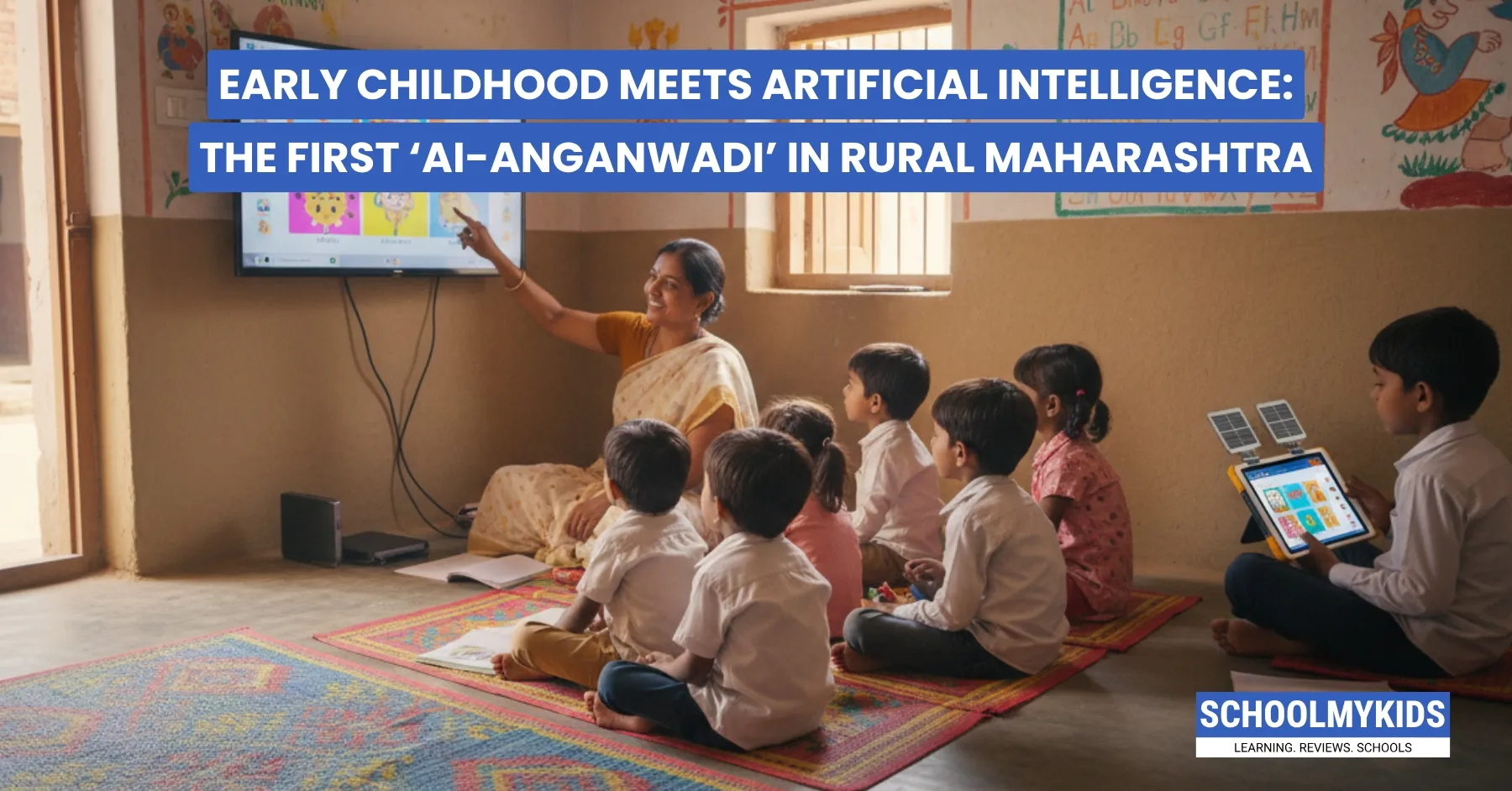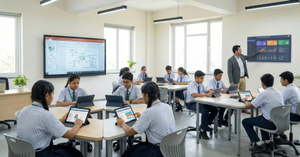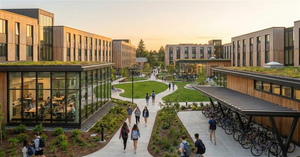Picture a three-year-old drawing balloons on a smart board. A four-year-old spotting a crocodile in a virtual jungle within seconds. This isn't happening in some fancy city school. This is Waddhamna village in Maharashtra's Nagpur district, about 18 kilometers from the city, where something amazing has been quietly happening.
What's the Big News?
India now has its first AI-powered anganwadi. For those who might not know, anganwadis are government-run early childhood care centers that serve children aged 2-6 years in villages and towns across India. They provide meals, basic education, and health checkups to young children, especially in areas where families might not have access to fancy preschools.
But the Waddhamna anganwadi is different. Since July, children here don't just learn with chalks and slates anymore. They wear VR (virtual reality) headsets from Meta, draw on AI-powered smart boards, use tablets, and learn through interactive digital content. Think of it as bringing the future of learning to a small village.
The project was launched by Maharashtra Chief Minister Devendra Fadnavis on July 27, costing about Rs 9.5 lakh. It's part of the Nagpur Zilla Parishad's Mission Bal Bharari, which basically means giving village children the same tech opportunities that city kids get.
Why This Matters So Much
The results speak for themselves. Before this AI upgrade, only 8-10 children would regularly attend this anganwadi, even though more were enrolled on paper. Now? Over 25 children show up every single day. That's more than double!
Parents are noticing big changes too. One parent said her son doesn't cry at the mention of anganwadi anymore. Another mom shared that her younger daughter now recites poems she's never even heard of. A child who once feared going to the center now looks forward to it.
This tells us that when learning becomes fun and engaging, children want to be there. And when children actually show up and stay interested, they learn more.
How Does This Actually Help Children Learn?
The technology isn't just there to look cool. It's actually smart about helping each child learn at their own speed.
For example, when a child uses the VR headset to tour a virtual garden, the system asks questions about what they saw. It tracks how quickly and accurately they answer. If a child is slower to identify a red car, the AI adjusts and gives them easier tasks. If they're quick, it makes things a bit harder. This way, every child can progress without feeling left behind or bored.
The anganwadi worker, Saroj Kukde, who has been working there for 14 years, uses these tools for about an hour each day. The children spend five hours at the anganwadi, six days a week, getting breakfast and a mid-day meal along with their learning time.
What About the Teachers?
Now, you might wonder: can anganwadi workers handle all this technology? That's a fair question. These workers already do so much, including cooking meals, keeping records, and teaching children. Adding technology could seem overwhelming.
That's why the tech company Qolaba created a careful three-month training program. They didn't rush anyone. They built the system to work like smartphones, which most people already know how to use. They hold training sessions three times a week, working around the workers' schedules.
Kukde admits the change was overwhelming at first, but now she says she learns something new every day and feels proud to be part of something so big.
The Bigger Picture: Beyond Just Education
What makes this project really special is that it's not stopping at just teaching ABCs and 123s. The Nagpur Zilla Parishad has bigger plans.
They want to use AI to track children's nutrition and growth. Anganwadi workers will soon be able to upload pictures of meals, and the system will give feedback on whether the food meets a child's age-specific nutritional needs. This connects with the government's Poshan Tracker system.
They're also planning to add multiple languages like Hindi, Marathi, English, and even foreign languages like German or French. Imagine village children learning a foreign language from age three!
The plan is to expand this to 40 more anganwadis in the district soon.
What This Means for India's Education System
This small anganwadi in Waddhamna village is doing something huge: proving that the digital divide between villages and cities can be bridged. For the longest time, we've accepted that village children will always be a step behind city children when it comes to technology and modern education. This project challenges that idea.
Vinayak Mahamuni, the officer leading this initiative, calls it "not just a tech project but a social movement." And he's right. If this works here, it can be copied across thousands of anganwadis in India. That means millions of rural children could get access to the kind of learning that seemed impossible just a few years ago.
Conclusion
Not everything has been smooth. Convincing parents and workers to trust this new model took effort. There were challenges in finding the right technology partner. The equipment needs careful handling and security.
But the early results are encouraging. Other blocks are already visiting to learn how they can do the same thing in their areas. Children are excited about learning. Parents are happy. Workers are proud.
This is what progress looks like: not just fancy technology for its own sake, but technology that actually helps real children in real villages learn better, grow healthier, and dream bigger.
The little classroom in Waddhamna village might be small, but the idea behind it is powerful enough to change the future of early childhood education in rural India.








Be the first one to comment on this story.